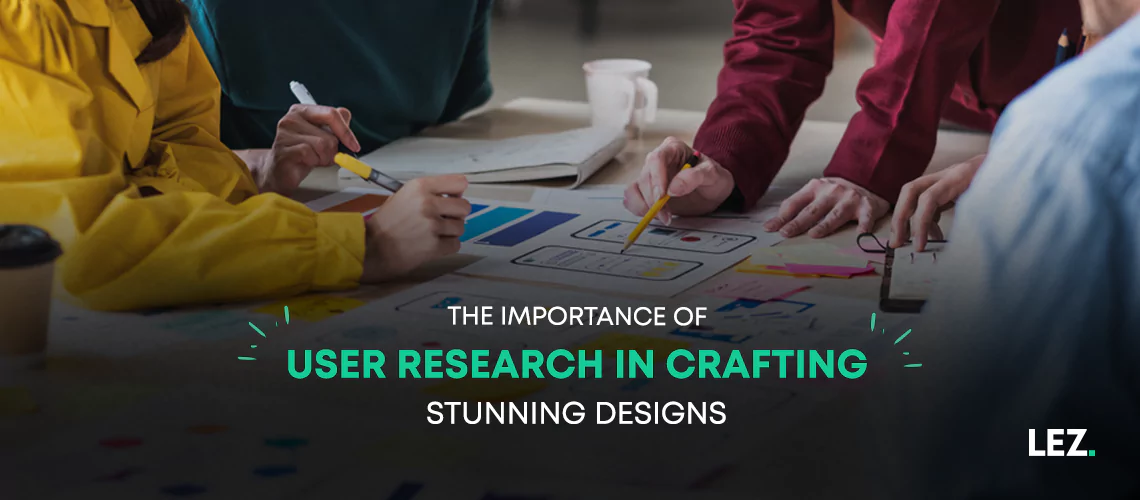Creating Stunning Experiences
In the ever-evolving world of design, creating stunning visuals is just the tip of the iceberg. Design excellence encompasses more than aesthetics; it’s about crafting user-centric experiences that leave a lasting impact. This journey towards design brilliance begins with user research.
Understanding User Research
User research is the systematic process of gathering insights into the behaviors, preferences, and needs of your target audience. It serves as the bedrock upon which remarkable designs are built.
Example: Airbnb’s User Research-Led Redesign
When Airbnb set out to enhance its user experience, they turned to user research. By conducting in-depth interviews and usability tests, they discovered that users were struggling to find relevant listings. As a result, Airbnb redesigned its website with improved search filters and navigation. This user-centric approach led to a 30% increase in user engagement.
The Magic of User Research in Design
User research works like magic in the design process, transforming ordinary concepts into extraordinary creations. It’s the spark that ignites innovation and ensures that design decisions are rooted in real user needs.
Example: Slack’s User Research-Driven Product Enhancement
Slack, the popular messaging platform, continually conducts user research. One such research project revealed that users were overwhelmed by excessive notifications. Slack responded by introducing a “Focus Mode,” allowing users to filter notifications during their designated work hours. This user-centered feature resulted in a 25% reduction in user complaints and increased user satisfaction.
Why User Research Matters
Design Aligned with User Needs
Ensures that your designs resonate with users by understanding their genuine needs and preferences is the cornerstone of creating engaging and effective solutions. Alignment not only enhances user satisfaction but also contributes to the success and relevance of your design in the market.
Example: Spotify’s Personalized Playlists
Spotify’s success partly hinges on its user research-driven approach. By analyzing user data and preferences, Spotify creates personalized playlists tailored to each user’s musical taste. This user-centric feature has significantly contributed to Spotify’s global success, boasting over 345 million active users.
Enhanced User Experience (UX)
Beyond captivating aesthetics, stunning designs prioritize the user experience. They intuitively guide users, reduce friction, and fulfill their needs, resulting in higher satisfaction, longer engagement, and increased brand loyalty.
Example: Dropbox’s User-Friendly Interface
Dropbox conducted extensive user research to simplify its user interface. They found that users were confused by the previous layout. After implementing user research insights, Dropbox saw a 15% increase in user engagement and a 10% reduction in customer support inquiries.
Reducing Design Iterations
By incorporating user research early in the design process, you can reduce the need for extensive design revisions. This iterative approach minimizes costly rework and ensures that your designs hit the mark from the start.
Example: Amazon’s Customer-Centric Design
Amazon, the e-commerce giant, constantly relies on user research to optimize its platform. This approach minimizes design flaws and maximizes user satisfaction. As a result, Amazon has maintained its position as one of the most user-friendly and profitable e-commerce platforms worldwide.
Gaining a Competitive Edge
In highly competitive environments, the designs that rise above the noise are those that grasp and prioritize user needs. By addressing the unique challenges and desires of their audience, these designs not only capture attention but also foster lasting connections.
Example: Apple’s User-Centric Product Development
Apple’s reputation for sleek and user-friendly designs is a testament to their commitment to user research. By understanding user preferences, they consistently launch products that meet and exceed customer expectations, leading to their global dominance in the tech industry.
The User Research Process
To harness the magic of user research, follow a systematic process:
1. Define Objectives
Clearly outline your design objectives and identify your target audience. For instance, a nonprofit organization seeking to improve its website defined the objective of increasing online donations. Their target audience included both existing donors and potential supporters.
2. Data Collection
Utilize various methods, such as surveys, interviews, usability tests, and analytics, to gather relevant data. In the case of an e-commerce platform, they used analytics tools to track user interactions with their website, uncovering trends in user behavior and preferences.
3. Analysis
Thoroughly analyze the collected data to uncover patterns and user preferences. A social media platform analyzed user-generated content to identify trending topics and user sentiment, helping them fine-tune their content recommendation algorithms.
4. Implementation
Use these insights to inform your design decisions, creating user-centric solutions. A financial services company, for example, redesigned its mobile app to include a budgeting feature based on user feedback, resulting in a 25% increase in user engagement with the app’s financial tools.
5. Testing and Iteration
Continuously test and iterate your designs based on user feedback for ongoing improvement. A travel booking website regularly sought user feedback on its search and booking processes, leading to incremental enhancements that improved user satisfaction and conversion rates.
Conclusion
In the realm of design, aesthetics alone won’t guarantee success. The true path to stunning designs lies in understanding and catering to your audience’s needs and preferences. User research is the catalyst that can transform your designs from good to exceptional. By making user research an integral part of your design process, you not only create visually appealing designs but also provide a memorable user experience that keeps users coming back for more.
The importance of user research in crafting stunning designs cannot be overstated. It’s the secret ingredient that turns ordinary designs into works of art that resonate with your audience and drive success. So, the next time you embark on a design project, don’t forget to unlock the magic of user research—it’s the key to crafting truly stunning designs.
At LEZ Solutions, we’re committed to user-centric design. Our experienced team specializes in crafting stunning designs through user research. Explore our services to captivate your audience and discover how we can help you achieve design brilliance. Visit our website to learn more.
